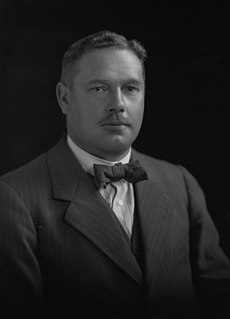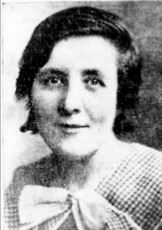Related Research Articles

The Scottish Trades Union Congress (STUC) is the national trade union centre in Scotland. With 40 affiliated unions as of 2020, the STUC represents over 540,000 trade unionists.
Accord is an independent trade union, affiliated to the TUC and the Scottish TUC. Accord is a specialist union for staff in financial services with members in the Lloyds Banking Group, MBNA, TSB, Equitable Life and Sainsbury's Bank. It has around 25,000 members.
The Workers' Union was a general union based in the United Kingdom, but with some branches in other countries. During the 1910s, it was the largest general union in the UK, but it entered a rapid decline in the 1920s, and eventually became part of the Transport and General Workers' Union (TGWU).
Community is a UK trade union which formed in 2004. The union represents workers in a diverse range of sectors, including iron and steel, domestic appliance manufacturing, clothing, textiles, footwear, road transport, betting and gaming and call centres, as well as workers in voluntary organisations, workshops for visually impaired and disabled people, community-care providers and housing associations. Although the former trade unions which amalgamated to form Community were all craft unions or industrial unions, Community is now a general union. Community has merged or transferred engagements with a number of smaller unions, some of which have become sections within Community. These include the National League of the Blind and Disabled (NLBD), the National Union of Domestic Appliance and General Operatives (NUDAGO), the National Union of Knitwear, Footwear & Apparel Trades (KFAT), the British Union of Social Work Employees (BUSWE), the Prison Service Union and the UFS.

Ernest George Hicks was a British trades unionist and Labour Party politician.
The Scottish Farm Servants' Union was a trade union in the United Kingdom.
The National Amalgamated Stevedores and Dockers (NASD), sometimes referred to as the National Amalgamated Stevedores' and Dockers' Society, was a trade union in the United Kingdom.

Dame Anne Loughlin, DBE was a British labour activist and organiser.
The Engineering and Fastener Trade Union was a trade union based in the West Midlands of England.

The International Federation of Trade Unions was an international organization of trade unions, existing between 1919 and 1945. IFTU had its roots in the pre-war IFTU.
The Amalgamated Society of Engineers (ASE) was a major British trade union, representing factory workers and mechanics.
The Amalgamated Association of Beamers, Twisters and Drawers (AABTD) was a British trade union which existed between 1866 and 2002. It represented skilled workers in the cotton industry who were responsible for preparing warp yarns prior to weaving.
The General Council of the Trades Union Congress is an elected body which is responsible for carrying out the policies agreed at the annual British Trade Union Congresses (TUC).
The North East Lancashire Amalgamated Weavers' Association was a trade union federation of local weavers' unions in part of Lancashire in England, in the 19th century.
The Burnley and District Weavers', Winders' and Beamers' Association was a trade union representing workers in the cotton industry in the Burnley area of Lancashire, in England. As cotton manufacturing dominated the town's economy, the trade union played an important role in the town, and several union officials became prominent national figures.
The Lancashire Amalgamated Tape Sizers' Friendly Society was a trade union representing workers involved in the preparation of cotton in the Lancashire area of England.
The Leicester and Leicestershire Amalgamated Hosiery Union was a trade union representing machine knitters in Leicestershire.
The Yeadon, Guiseley and District Factory Workers' Union was a trade union representing textile workers in part of the West Riding of Yorkshire, in England.
The Waterproof Garment Workers' Trade Union was a trade union representing workers involved in making waterproof clothing in the United Kingdom.
The Manchester and Salford Weavers' Association was a trade union representing weavers in part of Lancashire, in England.
References
- 1 2 3 4 5 6 7 Lerner, Shirley W. (1961). Breakaway Unions and the Small Trade Union. London: George Allen & Unwin. pp. 13–65.
- ↑ Smethurst, John B.; Carter, Peter (2009). Historical Directory of Trade Unions. 6. Farnham: Ashgate Publishing. p. 72. ISBN 978-0-7546-6683-7 . Retrieved 21 April 2013.
- ↑ Marsh, Arthur; Ryan, Victoria (2006). Marsh, Arthur (ed.). Historical Directory of Trade Unions: Including unions in Printing and Publishing, Local Government, Retail and Distribution, Domestic Services, General Employment, Financial Services, Agriculture. 5. Ashgate Publishing. p. 483. ISBN 978-0-85967-990-9 . Retrieved 21 April 2013.